Morley - Part 03 - Morley Smithy
w/e 05 October 2014
All this week's pictures were taken
with a Kodak DX6490
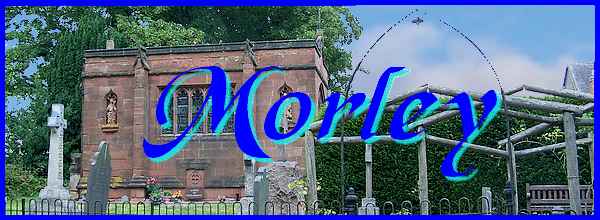
At the end of the previous part of this Village Trail
we had the choice of two routes and had decided to follow the
one to the Morley Smithy part of the village. We will return
in the next part to follow the other route towards Morley Hayes
but resume here as we reach Morley Smithy.
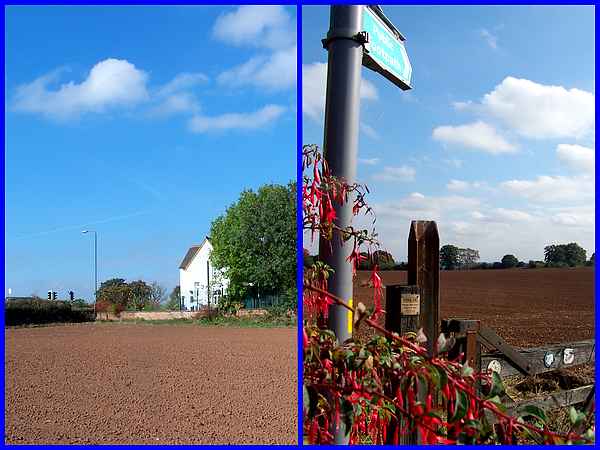
Believe or not but there is a footpath diagonally across a field
(above left) between the Church Lane and Smithy areas but it
is currently difficult to discern due to the farmer doing some
preparatory work on the land. The footpath indicator (above right)
though at the Smithy end shows the way,
|
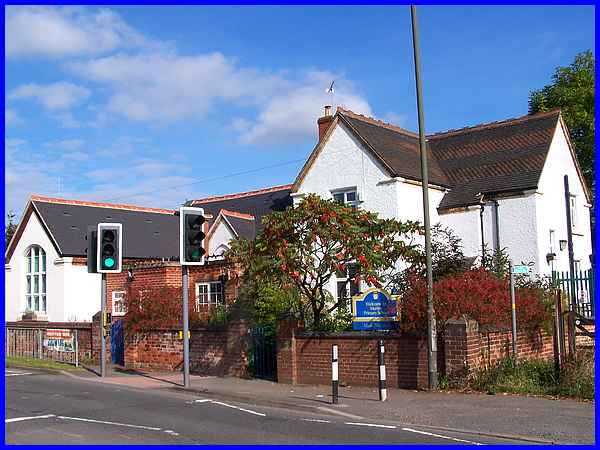
That same footpath sign can also be seen on the right of this
image of Morley Primary School. There has been a school in Morley
since 1816 but the first one, a Church of England school, was
erected near the Almshouses (situated in an area we shall see
later in this series). This was endowed by Emma Darwin of Breadsall
Priory. Emma was a daughter by the second wife of philosopher
and poet Erasmus Darwin, grandfather by his first wife of the
renowned naturalist and geologist, Charles Darwin. Whilst that
is a fascinating little piece of history, the school closed in
1879 and had been demolished by 1910. School boards were set
up and operated between 1870 and 1902 to establish and administer
elementary schools and a new board school in Morley by the main
road opened in 1881 with a room for infants being added in 1897.
|
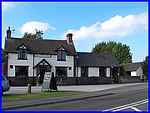 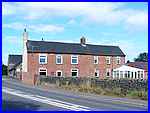 Although
once again threatened with closure in the 1980s due to low pupil
numbers, the new housing development of Oakwood on the outskirts
of Derby resulted in an influx of children and the school's future
now seems secure. Continuing from the school along Main Road
we find the Three Horseshoes public house (left) on one side
and Morley Smithy Farm (right) on the other. Although
once again threatened with closure in the 1980s due to low pupil
numbers, the new housing development of Oakwood on the outskirts
of Derby resulted in an influx of children and the school's future
now seems secure. Continuing from the school along Main Road
we find the Three Horseshoes public house (left) on one side
and Morley Smithy Farm (right) on the other.
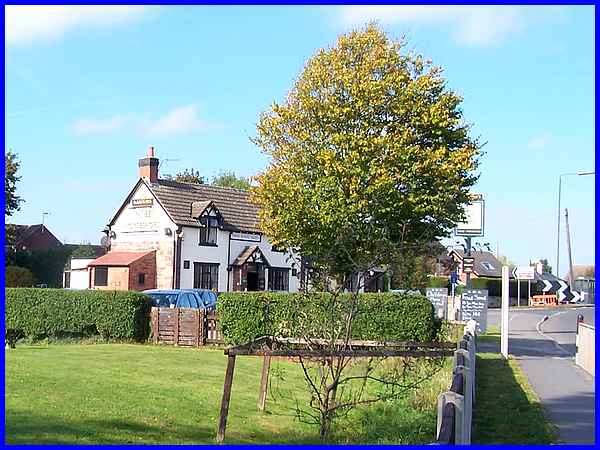
It is the pub that is the origin of the name of the area as it
was formerly the village smithy. With a thatched roof and its
own brewhouse the smithy was here during the eighteenth century
but was rebuilt in 1914 with only the cellars from the original
building remaining intact. Before moving on, notice the chevrons
and the orange barriers by the bus stop on the right of this
image.
|
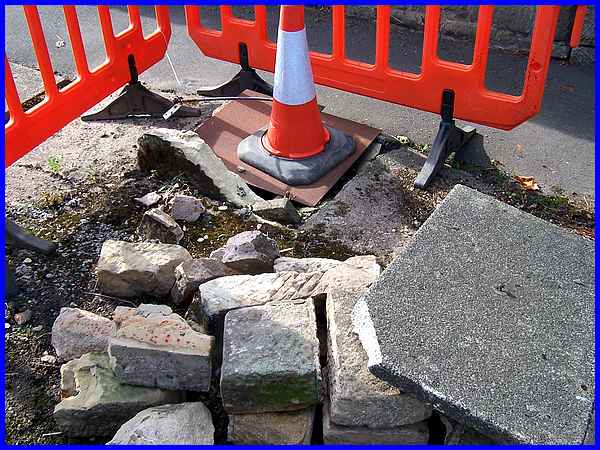
Between those chevrons and barriers is a pile of stones and slabs
with a cone covering a hole in the footpath. A Toll House once
stood near here at the corner of Main Road and Brick Kiln Lane.
It was demolished and rebuilt further along Main Road in 1929
and is now mostly obscured from the road by a high hedge but
this pile of stones are the remains of its well. How it got into
this state is unknown, one can only assume an accident of some
sort occurred but hopefully the barriers indicate at some point,
it will be repaired.
|
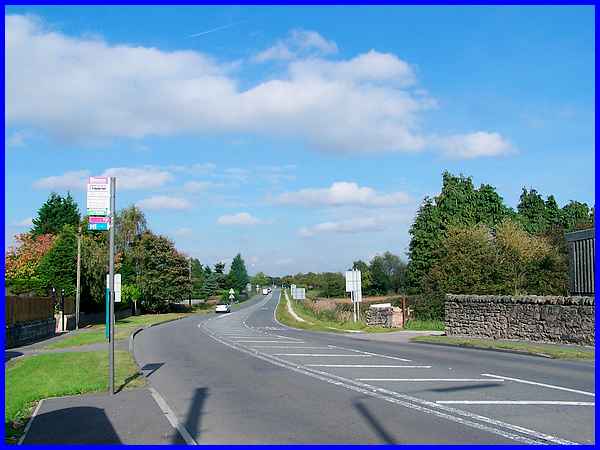
Main Road continues from the bus stop towards Smalley and Heanor
but before that is the entrance to Morley Hayes Golf Club and
we shall approach that from a quieter route across the fields
later.
|
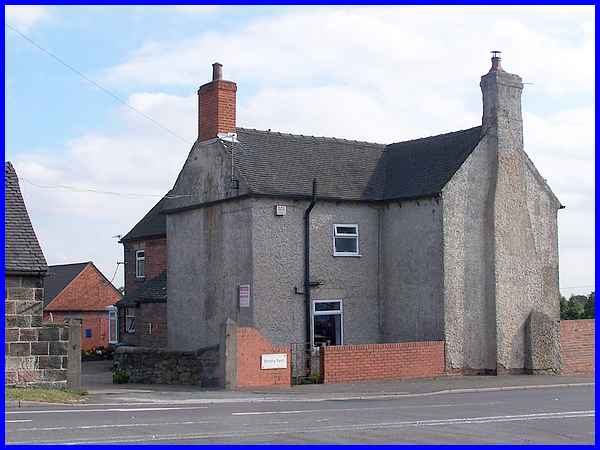
Across from the remains of the well is the entrance to Morley
Smithy Farm and when I joined a group for a Heritage Walk around
Morley in 2008, we learned that the farm had been in the same
family for over a hundred years. It was also said at the time
that this is where to buy potatoes from and orders could be placed
for a Christmas turkey. The board at the entrance still tells
of potatoes being for sale so presumably the same family is still
in residence and another six years can be added to its tenure.
|
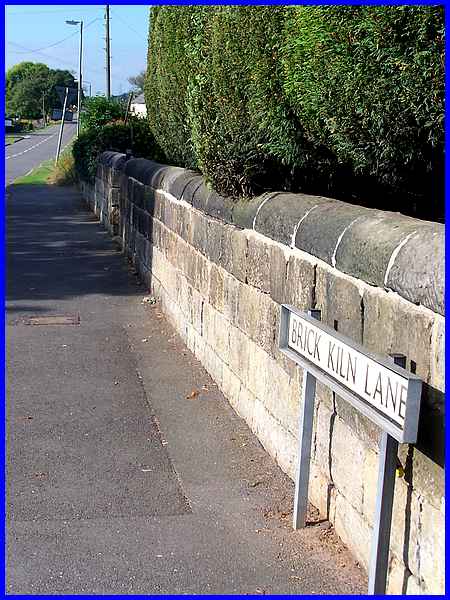
The farm faces down Brick Kiln Lane which is another clue along
with Quarry Road at the far end as to former activities on Morley
Moor.
|
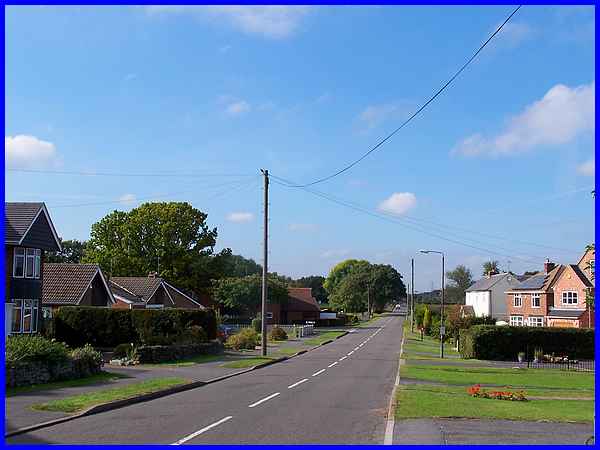
A small number of properties line both sides of Brick Kiln Lane
near its junction with Main Road but the majority of the lane
opens out onto open countryside and farmland. At one time there
was a large demand for local stone for grindstones and sharpening
stones for agricultural implements but now the quarries and brickworks
are closed and little remains to remind anyone of the past except
the road names.
|
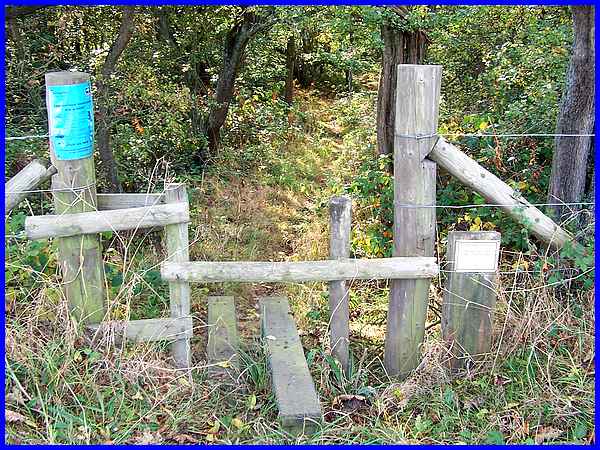
Having said that there is a reminder near the Quarry Road end
of Brick Kiln Lane at the entrance to a Derbyshire Wildlife Trust
Nature Reserve.
|
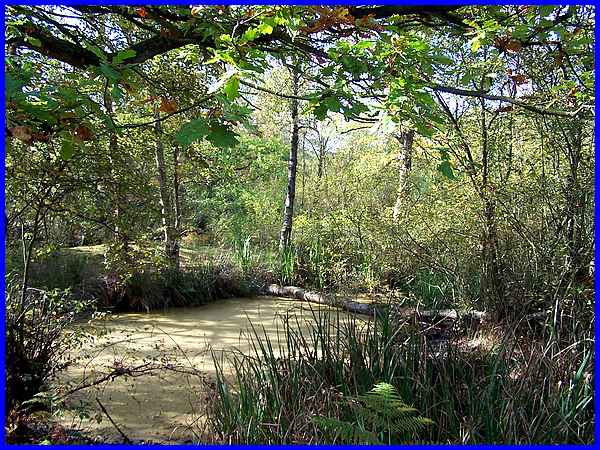
Walking through the reserve is initially like walking through
any similar wood but it soon becomes apparent that there are
many water filled pools. These are the old clay pits that were
dug for the former brickworks and this Nature Reserve is actually
the site of those works. It was previously owned by Captain Haslam
of Breadsall Priory but was purchased in 1984 by the Trust and
is now a Site of Special Scientific Interest (SSSI) as the pools
create a range of important and interesting habitats for both
flora and fauna.
In the next part we will return to the Church Lane area and head
for Morley Hayes.
|

